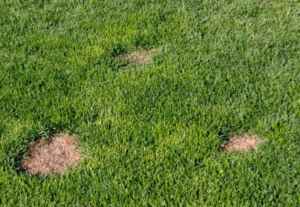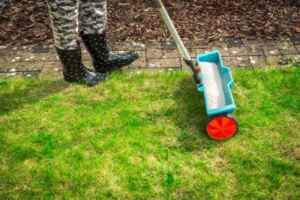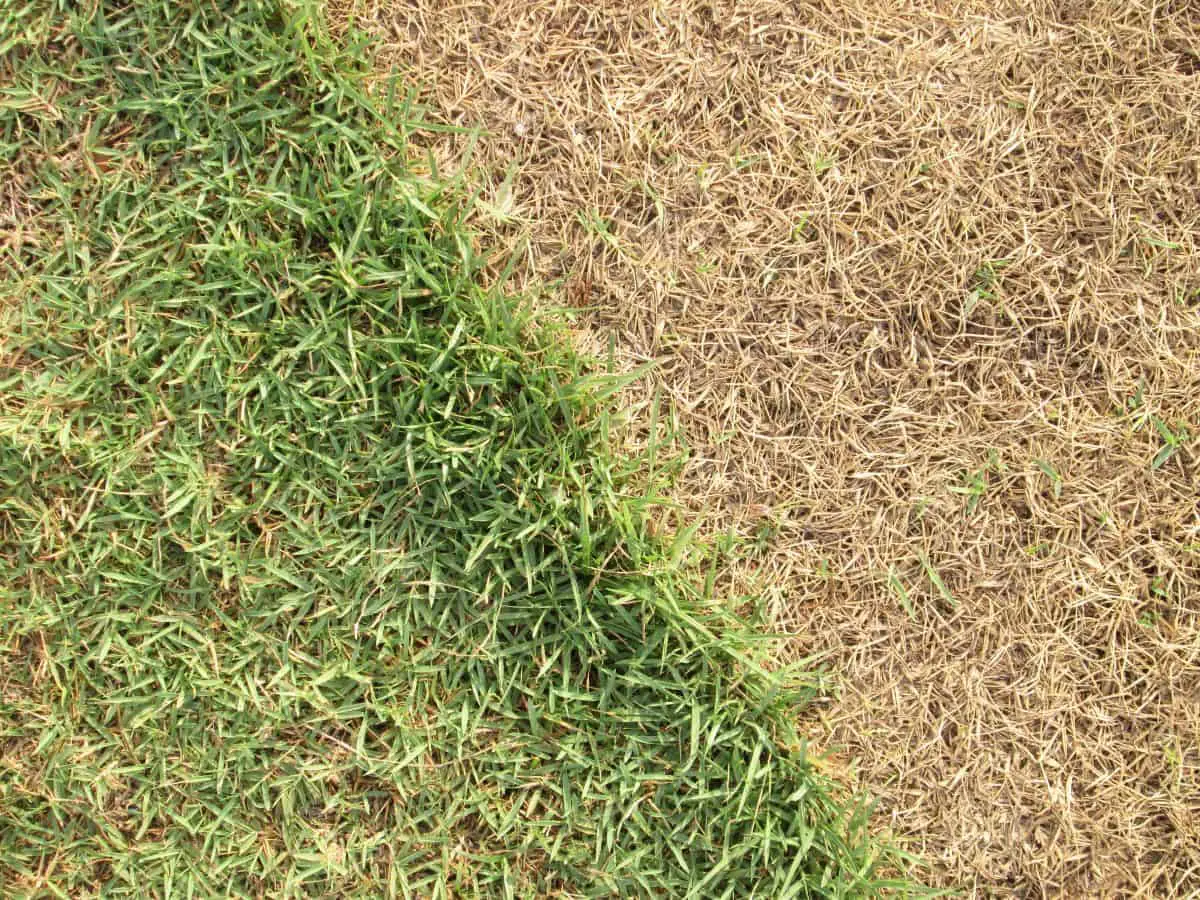Have you ever wondered why your grass isn’t growing? This is a frequent complaint in the Cincinnati area. There may be several reasons why your grass won’t grow. These are most likely the same reasons that cause your grass to be thin or not green enough. During grass growing seasons it is important to know what grass grows best in your area. Choose the best grass for your area and light access. Grass requires specific conditions to thrive and appear like a lush carpet. If any of these conditions aren’t met, your grass may suffer.
A lot of homeowners are unaware of all of the elements that contribute to grass being a lush and lovely aspect of their environment. Some visible issues, such as sickness or grass that is cut too short, are among them. Other problems may have no obvious cause but will produce symptoms that point to a specific condition.
What Causes Grass Not To Grow In Some Areas?
I do not know of any homeowner, who likes their lawn not looking its best. So, when your grass is not growing in certain areas it takes away from the overall look of your lawn. We all know that a healthy lawn is important to the curb appeal of our homes. A significant factor in having a healthy lawn is making sure that the grass receives enough sunlight. If your grass is not getting enough sunlight, then it will not grow.
 Here Are Some Reasons Your GrassMay Not Be Growing:
Here Are Some Reasons Your GrassMay Not Be Growing:
Soil Type
The type of soil in your yard can play a big role in whether or not your grass will grow. Different types of grasses prefer different types of soils.
- For example, Bermuda grass does best in sandy soil, while Kentucky bluegrass prefers clay.
- If you have the wrong type of soil for the type of grass you’re trying to grow, it’s unlikely that your grass will thrive.
Compaction
In lawns that are frequently walked on, the soil is likely to be compacted, which implies that the dirt has been packed too tightly, making it impossible for air and water to reach the grass’s roots.
- Compacted soil can be a big problem because it prevents your grass from getting the nutrients it needs to grow.
- If you think that compaction might be an issue on your lawn, there are a few things you can do to alleviate the problem.
- First, you can try aerating your lawn.
- This involves making small holes in the soil to allow air and water to reach the roots of your grass.
You can also try topdressing your lawn with a layer of compost or other organic matter. This will help to improve the quality of your soil and make it easier for your grass to grow.
Drought
Grass won’t grow when there isn’t enough rainfall. Drought is one of the most prevalent reasons for grass to die. If your lawn doesn’t get enough water, the roots will dry out and the blades will become brown.
- If you think your lawn isn’t getting enough water, there are a few things you can do to improve the situation.
- Make sure your sprinklers are working properly by checking for leaks and repairing them if necessary.
- Also, try watering your grass manually with a hose or watering can.
Grass growth will be stunted if you only water your lawn once a week, so make sure to water it at least two or three times a week for best results.
- Most lawns need 1 to 1.5 inches of water each week.
- With less than 1 to 1.5 inches, the grass can become dehydrated.
- To conserve the water it has to survive, the water will react in self-defense, and cease to grow longer.
Watering Your Lawn At Night
Watering at night may promote fungus to grow in the grass. A yard may be infested with fungus. Watering after dark is beneficial for worms, snails, and other creatures. During the summer, watering should take place between 5 AM and 9 AM daily.
Fertilizing The Lawn
The wrong fertilizer is used (or it is applied rarely). Grass growth may be impeded by a lack of phosphorus, nitrogen, or potassium.
- Too much nitrogen can harm the grass.
- Every sort of grass and soil has its fertilizer.
- A lawn specialty store can advise you on the right fertilizer, application rate, and frequency for your situation.
They can also advise what is the best type of fertilizer to use on your lawn like liquid or pellets. After the fertilizer has been applied to the grass, then the lawn should be irrigated afterward.
- It is best not to apply fertilizer before a rainstorm so that it washes away.
- If you are using a spreader, make sure to calibrate it properly so that you don’t apply too much or too little fertilizer.
 Pests and Diseases
Pests and Diseases
Many different pests and diseases can affect the growth of your grass. Some of the most common include chinch bugs, grubs, and white grubs.
- These pests can damage your grass by eating the roots or blades of grass.
- Diseases such as brown patch
If you think that pests or diseases might be a problem on your lawn, the best course of action is to consult a professional. They will be able to identify the problem and recommend the best course of treatment.
Length Of The Lawn
Cutting the grass too short or using a dull blade might cause the roots to be shocked, which can limit growth and thin out the grass over time. Maintain a 70% thick even ratio for each trimming.
- Grass that is cut too short allows weeds to develop and reverts for a month.
- Giving your grass a buzzcut may make it look nice for a couple of days, but it will weaken the grass and make it more susceptible to disease.
- The best length to cut your grass will depend on the type of grass you have.
For most types of grass, the ideal length is 2 to 3 inches. If you cut your grass any shorter than this, it will be more susceptible to damage and disease.
- It’s also important to use a sharp blade when you mow your lawn.
- A dull blade can tear the grass, which will damage the blades and make it more difficult for the grass to recover.
If you’re not sure whether or not your blade is sharp enough, it’s best to err on the side of caution and get a new one. This way, you can be sure that your grass is being cut cleanly and won’t be damaged in the process.
Soil pH
The soil’s pH might be abnormal. The optimum pH for grass is 6.0 to 7.0, according to experts. Grass loves acidic soil, and this level ensures that vital nutrients are readily available.
- If the soil is too alkaline, certain nutrients essential to grasses are less available.
- To make sure that your soil’s pH is within the ideal range for grass, you can get a soil test kit from a gardening store or nursery.
- Once you know the pH of your soil, you can adjust it accordingly.
- For example, if your soil is too alkaline, you can add sulfur to lower the pH.
- On the other hand, if your soil is too acidic, you can add lime to raise the pH.
It’s best to consult with a professional before adding any amendments to your soil, as it’s easy to overdo it and end up with an imbalance.
Light Conditions
The amount of sunlight that an area receives can affect grass growth. Grass needs at least six hours of sunlight per day to thrive.
- If an area doesn’t get enough sunlight, the grass will be spindly and yellow.
- It’s also important to make sure that the grass isn’t receiving too much sunlight.
- If an area is in full sun all day, the grass will become dried out and straw-like.
It’s important to find a balance when it comes to sunlight exposure. Too much or too little sunlight can both have negative effects on grass growth.
What Should I Do about my Grass If My lawn Is Well Shaded?
If your lawn is in full shade, there are a few things you can do to try to encourage grass growth. One option is to reseed the area with a shade-tolerant grass variety.
- Another option is to add a bit of compost to the soil to help retain moisture.
- You might also want to try mowing the grass a bit higher than usual to help encourage growth.
- Keep in mind that it might be difficult to get grass to grow in an area that doesn’t get much sunlight.
If you’ve tried all of these things and you’re still not seeing results, you might want to consider planting a ground cover or shade-loving plants instead of grass. Consult your area professional is always best.
 Conclusion
Conclusion
There’s no need to be concerned that your lawn isn’t the greenest on the block if you address these issues. These challenges are the most common ones, There can also be a mixture of more than one of these reasons your lawn does not grow. By going down the list more than likely your issue can easily be resolved.
Ensure you are watering, fertilizing, and mowing correctly as well as keeping an eye out for pests and disease, your lawn will be looking its best in no time. If these areas do not fit the bill, call a professional to help you determine the underlying cause. A well-manicured lawn is something to be proud of and achieved by following these simple tips.

